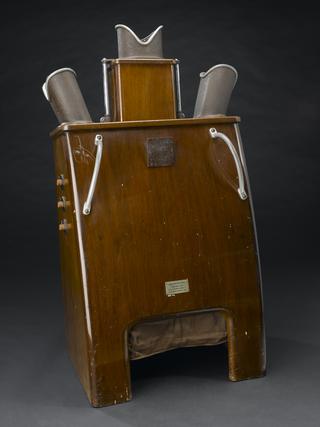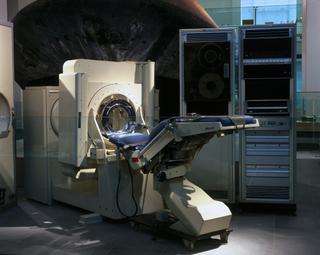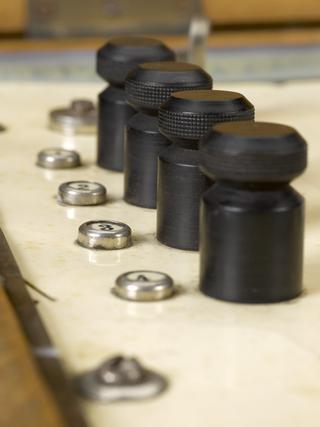
Tin of 'Horlicks X-ray Shadow Meal', England, 1938-1950
- maker:
- Horlicks Limited




Tin of 'Horlicks X-Ray Shadow Meal' barium sulphate compound by Horlicks Ltd., Slough, England, 1938-1950.
Bones show up easily on an X-ray but soft tissues such as guts and intestines hardly show at all. To improve the quality of the X-ray, what is known as a contrast medium is used. This is intended to improve the detail of these otherwise barely visible structures.
For example, after a patient drinks a solution of barium sulphate, the guts show up as an opaque white colour in subsequent X-rays. To make the liquid easier to drink, it was sometimes flavoured with the popular malted milk drink Horlicks. Barium sulphate is still used today to improve contrast in X-ray images.
Details
- Category:
- Radiomedicine
- Object Number:
- 1981-595/1
- Materials:
- steel (metal) and paper label
- Measurements:
-
overall: 185 mm 155 mm, 1.62 kg
- type:
- x-ray contrast media




